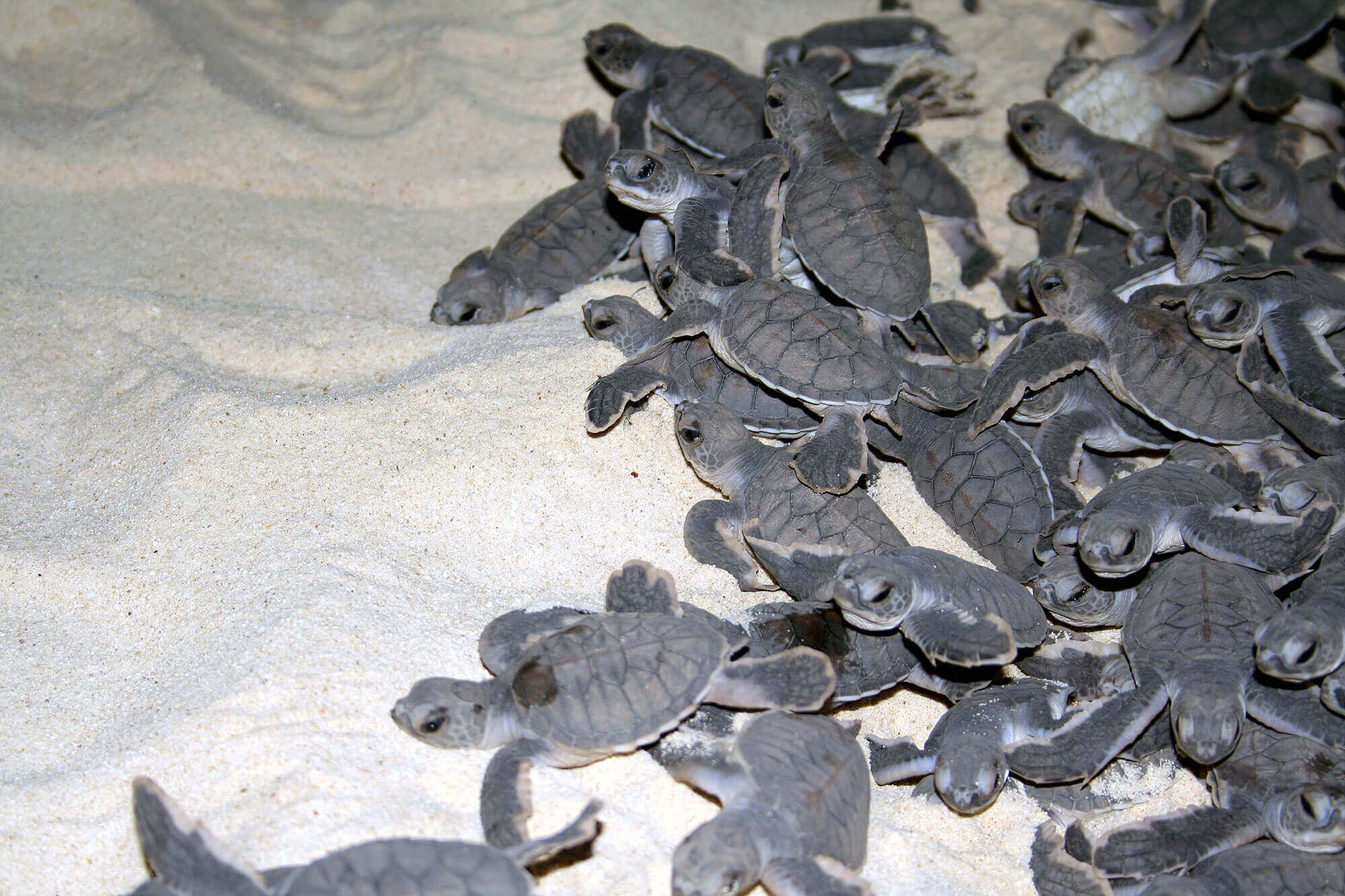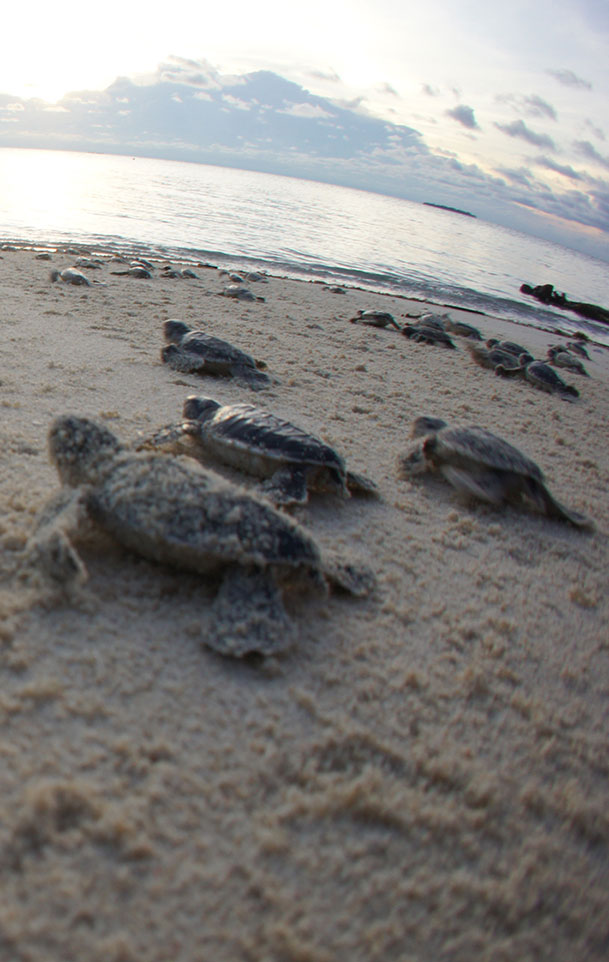Turtle Conservation
Nesting
Both Green and Hawksbill Turtles come to shore throughout the year to lay their eggs. Peak season for the Greens are between July to October and for the Hawksbills between February to April. A bright light on or near their nesting beach is a major deterrent and they may avoid coming on shore entirely. The female turtle drags herself up the beach to a site above the high water mark. Using her rear flippers, she excavates an egg chamber after which she proceeds to lay her eggs. Salt glands behind the eyes allow them to eliminate salt taken in while they are at sea. The salty mucus gives the impression of tears as the turtle lays her eggs. The clutch size varies between 40 - 200 eggs but batches of 50 - 80 are most common. When all eggs have been laid, she covers them with sand and laboriously fills the body pit to conceal the site of the nest.


All new turtles that come to shore at the Park are tagged by the rangers, the tag reading “ Return to Turtles Island Park, Sandakan, Sabah, Malaysia." Tagging and measuring turtles enable the Park to keep a data base to gain a clearer picture of the turtle’s growth, distribution and population. The exhausted turtle struggles back to the sea leaving behind the tracks in the sand. The egg laying process can take about 1-2 hours to complete.
Hatchery Practices
Hatcheries exist on all three islands. They protect the eggs from natural predators such as monitor lizards, birds and snakes. They also protect nests from being dug up by other nesting turtles and from soil erosion. Freshly laid eggs are excavated and transported promptly to the hatchery. The eggs are placed by hand into 75 cm deep pits, covered in sand and surrounded by plastic wire mesh. Each nest has an information plate displaying a nest serial number, date of collection and number of eggs transplanted.
Environmental factors determine the sex of the turtles. The temperature of the sand in which the eggs are incubated plays a critical role. The temperature is influenced by the depth of the nest, the characteristics of the sand, and the weather. Higher sand temperatures result in more females. A difference of only 4.5 degrees Fahrenheit can make the difference between a nest that is wholly female or one that is all male. To ensure certain nests are cooler than others, some areas of the hatcheries are shaded.
After 50-60 days the hatchlings will emerge, mainly at night, which they deduce by the cooler temperatures of the sand. The hatchlings are released at various points on the island immediately after they hatch. More than 2.6 million hatchlings were released between 1977 and 1988. The hatchlings are most vulnerable and only a few will survive to adulthood.


